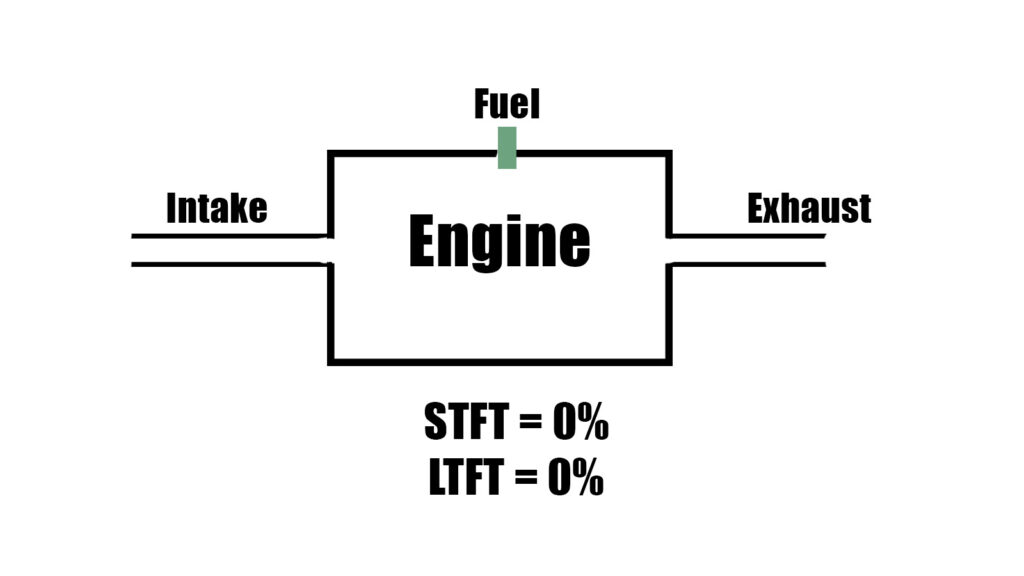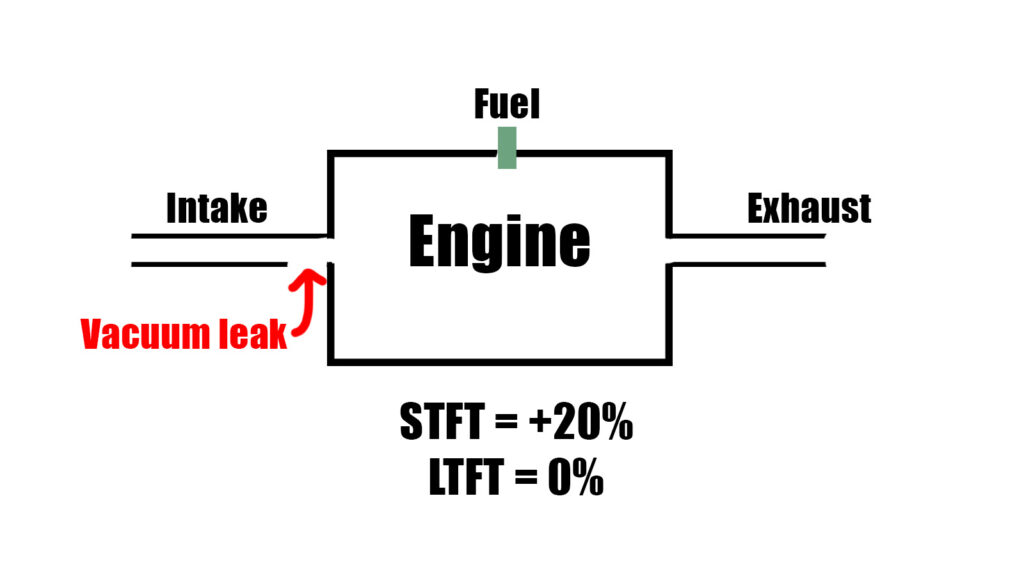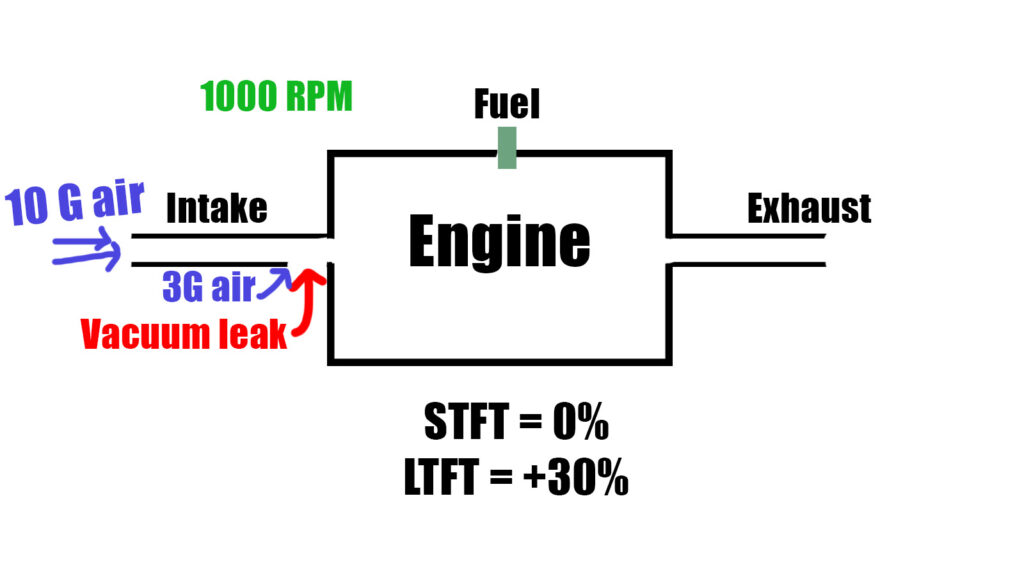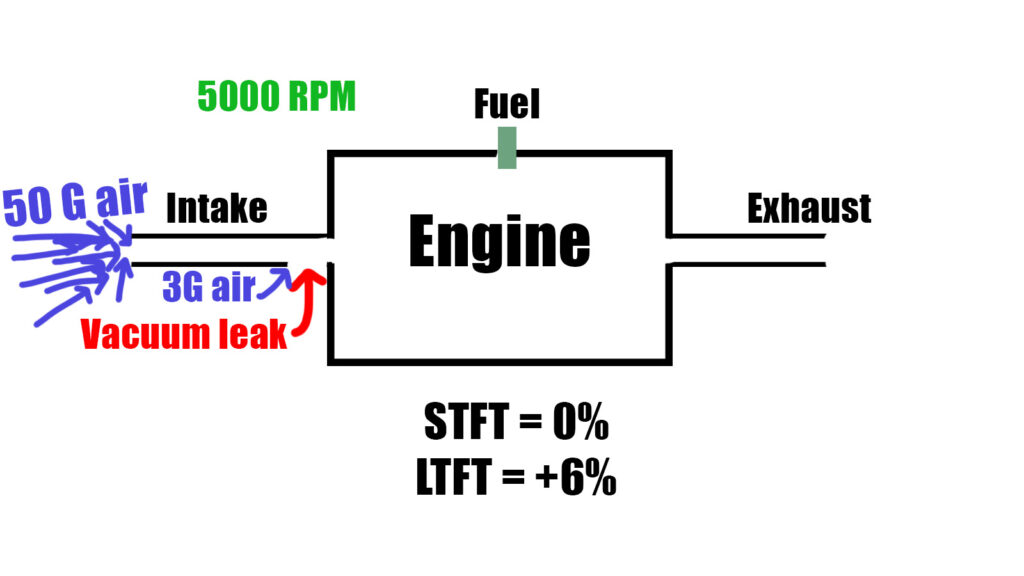Fuel trims on OBD2 scanner explained!
Mar 22, 2025We can observe fuel trims on the OBD-II scanner to discover vacuum leaks.
Let's imagine we have a car with an engine without any issues, everything is working correctly and fuel trims should be close to 0%.

Now our intake hose gets a hole in it sucking additional air which is not detected by ECU. However the oxygen sensor will detect leaner condition (more air, same amount of fuel), and ask for an increase in fuel amount, which will raise the STFT (short-term fuel trim).

Once the Short-term fuel trim settles around one number and stops raising, it is a signal for a long-term fuel trim to make a permanent adjustment to the fuel amount.
If we had STFT +20% before, the LTFT would raise to the same level of 20% and STFT can go back to 0% and stay there unless there is another signal to increase the fuel amount.

Confirm vacuum leak by increasing RPM
You may have already heard that you can confirm the vacuum leak by increasing the RPM, but how is that possible?
Here is our engine idling at 1000 RPM. We have 10g of air coming in the intake hose and +3g of air coming in because of a vacuum leak. The extra 30% of air (3G), will cause fuel trim to raise at 30%.

However, if I step on the gas pedal and get to 5000 RPM, now we have 50g of air coming in trough the intake hose, but still only 3g of extra air coming in the engine because of the vacuum leak.
The 3g of air makes a lot less difference to 50g of air, than to 10g of air, that's why with higher rpm we can see the fuel trim dop if its caused by a vacuum leak.

Lorem ipsum dolor sit amet, consectetur adipiscing elit. Cras sed sapien quam. Sed dapibus est id enim facilisis, at posuere turpis adipiscing. Quisque sit amet dui dui.
Stay connected with news and updates!
Join our mailing list to receive the latest news and updates from our team.
Don't worry, your information will not be shared.
We hate SPAM. We will never sell your information, for any reason.

